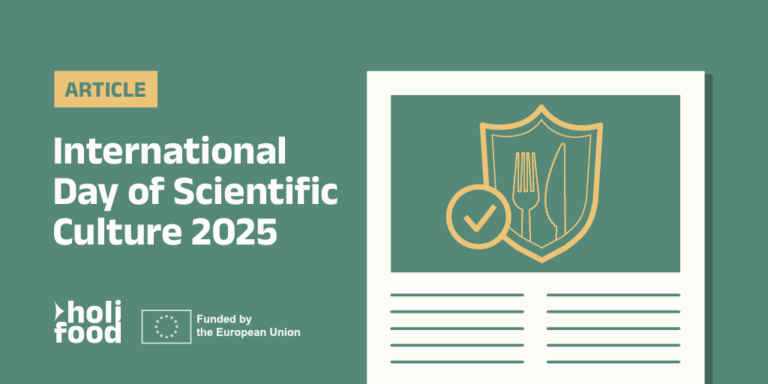(Risk) communication: new frontiers in food safety

How our everyday food choices connect with climate risks and the future of safe eating
When we pick up groceries, most of us think about freshness, nutrition, taste, or price. But behind every food choice lies a hidden story of climate change, emerging risks, and the challenge of keeping food safe in a rapidly shifting world.
The HOLiFOOD project is exploring these hidden stories, looking at how climate change, new technologies, and evolving consumer habits are reshaping food safety. The research reveals something striking: while people are increasingly aware that climate change threatens food systems, many struggle to tell the difference between emerging risks—linked to climate-related disruptions, intensive production, and globalised supply chains, and climate change—, and the existing risks.
Take maize, for example. It’s a staple across Europe, but studies show it can carry risks ranging from pesticide residues (documented across European soils and harvested crops) to fungal toxins (e.g., aflatoxins, deoxynivalenol (DON), fumonisins) that survive storage and processing (Paula S. Tourinho et al., 2025) [1]. While veterinary drug residues are more commonly a concern in animal-derived products, indirect contamination via feed or environmental routes remains a potential, though less often observed/reported, risk (Felipe Penagos-Tabares et al., 2023) [2]. In response to this, HOLiFOOD researchers are using innovative tools, including AI models, to predict these risks and help regulators respond faster. Similarly, lentils — a popular plant-based protein — are being studied for how policy and science can work together to keep them safe and sustainable (Kronenberg, 2022) [3].
Habits, risks, and mistrust
Consumers today are balancing competing pressures: affordability, health, and sustainability. In interviews across the UK, France, Germany, and Hungary, people voiced concerns about pesticides, antibiotic resistance, and plastics in fish. Some worried that governments weren’t enforcing rules strictly enough, while others felt confused about new technologies like genetically modified foods.
This mismatch matters. Consumer trends are changing faster than regulation, leaving gaps in safety labelling and creating uncertainty at the checkout. When people don’t feel confident that their food is safe, mistrust grows.
Why communication matters
Food safety isn’t just about science—it’s also about trust. Vulnerable groups, who may already face barriers to accessing healthy diets, often find food safety information technical and inaccessible. Bridging that gap requires new approaches to communication: clear labels, simple visuals, and messages that connect scientific evidence to everyday concerns.
The power of citizen science
One promising path forward is citizen science. By involving communities in how risks are explained, researchers and policymakers can make food safety communication more relevant and effective. Rather than relying on top-down warnings, co-produced strategies give consumers a voice—shifting them from passive recipients of information to active partners in creating safer, climate-conscious food systems, while also strengthening legitimacy.
Looking ahead
Food safety has always been about more than what’s on our plates—it’s about the systems that deliver it. As climate change brings new challenges, the way we talk about risks will be just as important as the science that identifies them.
The HOLiFOOD project illustrates how transparent regulation, advanced tools, and citizen-driven communication can improve decision-making and help bridge the gap between consumer habits and safety standards. The future of food safety is not only safe but also sustainable, trusted, and co-created with the people it is meant to protect. Targeted education campaigns that translate complex science into everyday language—from children to the elderly—will be vital in achieving this.
Conclusion
Consumer habits, climate pressures, and food safety risks are deeply interconnected. As consumer preferences evolve faster than regulatory reforms, new frameworks must prioritise effective, co-produced communication strategies. HOLiFOOD research demonstrates that by integrating citizen perceptions, advancing scientific tools, and strengthening regulatory responsiveness, policymakers and industry can build food systems that are not only safe but also trusted, sustainable, and resilient in the face of climate change.
Prepared by Dr Novieta H Sari – Postdoctoral Research Associate – Newcastle University, UK
[1] https://doi.org/10.1016/j.jhazmat.2025.139113
[2] https://doi.org/10.1016/j.envpol.2022.120626



